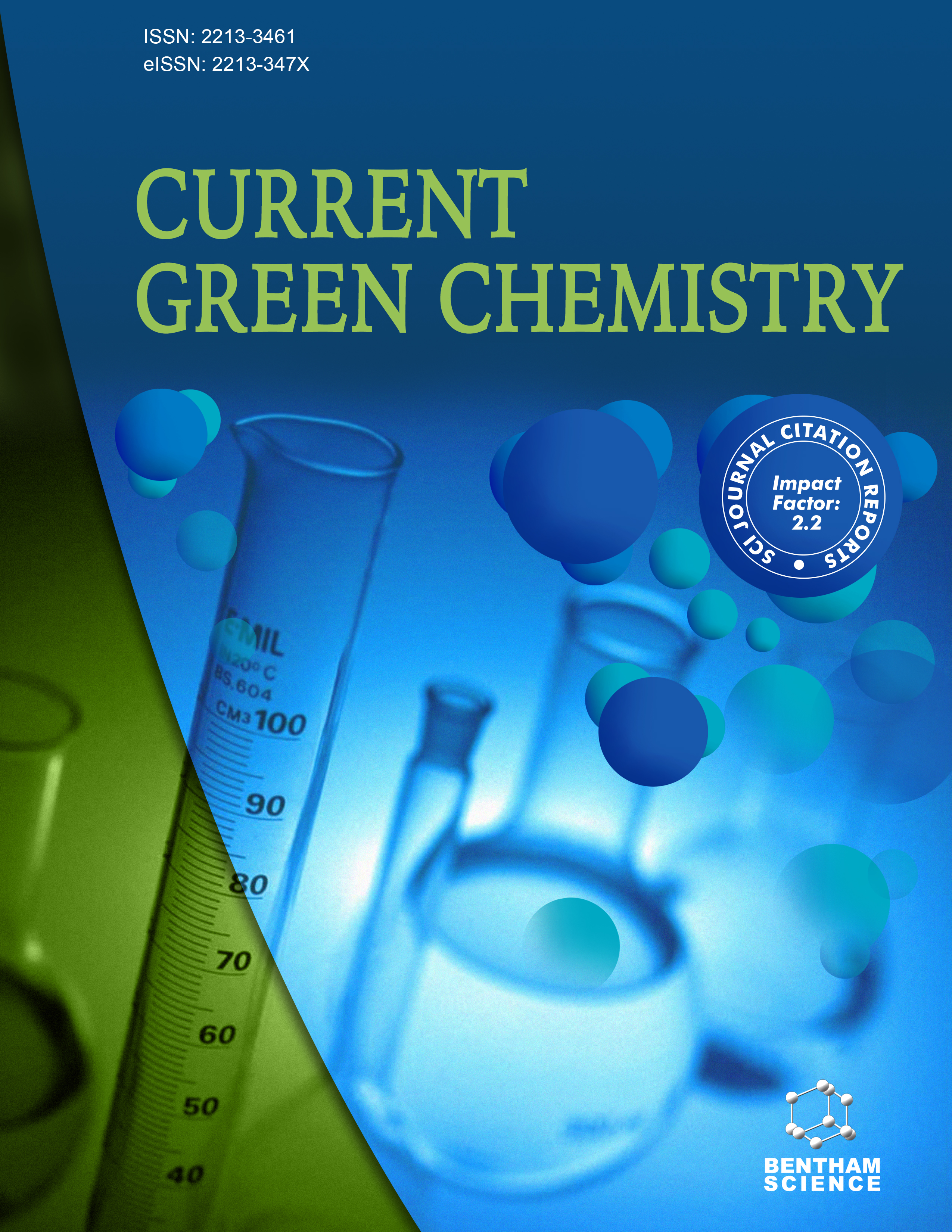- Home
- A-Z Publications
- Current Green Chemistry
- Previous Issues
- Volume 2, Issue 4, 2015
Current Green Chemistry - Volume 2, Issue 4, 2015
Volume 2, Issue 4, 2015
-
-
Progress in Polysaccharide/Zeolites and Polysaccharide Hydrogel Composite Sorbents and Their Applications in Removal of Heavy Metal Ions and Dyes
More LessAuthors: Ecaterina S. Dragan and Maria V. DinuDesign of composite biosorbents based either on polysaccharides as biopolymer matrix embedded with natural or synthetic zeolites or composite hydrogels having polysaccharides as one component and their applications in sorption processes of heavy metal ions and dyes has been reviewed based on the most recent publications in the field. It was demonstrated that polysaccharide-zeolite composites exhibit higher performan Read More
-
-
-
Antimicrobial Properties of Ag-Exchanged Natural and Synthetic Zeolites: a Short Review
More LessAuthors: Hee J. Park and Hyung M. LimInorganic antimicrobial agents have attracted increasing attention as they can overcome the shortcomings of organic antimicrobial agents, such as low heat resistance, high decomposability, and short life expectancy. Typical examples of inorganic antimicrobial agents are titania, zinc oxide, silver, and metal-exchanged zeolites. Silver- or zinc-ion-exchanged synthetic zeolites are known to exhibit antimicrobial activities in whic Read More
-
-
-
Functional Gradient Adsorbents Processed with Biogenic Components for Ecologically Benign Water Purification
More LessAuthors: Eva Chmielewská and Fang XuThe topic of this paper is to review some results of laboratory examinations of mostly volcanic aluminosilicates (clinoptilolite-rich tuffs, tephra, stilbite, alginite, montmorillonite, perlite product vapex) deposited in Slovak and some Chinese repositories, which were achieved during scientific cooperation. The overview is limited and highlights only those results which concern Pb(II), Al(III), PO4 3- and Sb species removal from a Read More
-
-
-
Abundantly Available Natural or Bioinspired Materials for Aqueous Pollutants Removal
More LessIn this review attention is focused on the various traditional and ecofriendly adsorbents, including a few of the local repositories which have proven enhanced performance for environmental pollutants removal. Due to their low cost and local availability, natural materials such as zeolite, montmorillonite-rich bentonite, industrial waste product chezacarb, beringite, chitosan, low rank coal shungite, fossil alginite, slovakite, s Read More
-
-
-
A Survey of the Palladium-Catalyzed Hirao Reaction with Emphasis on Green Chemical Aspects
More LessAuthors: Erzsébet Jablonkai and György KeglevichThe Pd-catalyzed P–C couplings of aryl, hetaryl and vinyl derivatives and species with a P(O)H function, typically dialkyl phosphites and secondary phosphine oxides giving rise to phosphonates and phosphine oxides are summarized with special emphasis on the green chemical variations. A great variety of reactions are discussed to demonstrate the different conditions and catalyst systems described. environmentally friendl Read More
-
-
-
Reforming Biodiesel Fuels via Metathesis with Light Olefins
More LessAuthors: Sean P. Mc Ilrath, Barada P. Dash, Michael J. Topinka and Douglas A. KlumppFatty-acid methyl esters (FAME) are considered a renewable source of raw materials for the chemical industry, including their use in biodiesel fuel mixtures. In the following manuscript, we describe the cross-metathesis reactions of a corn oil-derived FAME mixture with isobutylene and other branched light olefins. Cross-metathesis reactions are also reported with styrene. Cross-metathesis reactions were done with methyl ole Read More
-
-
-
A Clean and Practical Catalyst free Synthesis of Keto and Aldoximes as well as the Beckmann Rearrangement by using Ethyl Lactate as an Environmentally Benign Medium
More LessAuthors: Yunyun Liu and Weijiang WenEthyl lactate, a bio-based nontoxic solvent has been found as a medium for the general synthesis of keto- and aldoximes under catalyst-free conditions. The synthesis of amides via Fe-catalyzed Beckmann rearrangement of the ketoxime has also been realized in the same green medium.
-
-
-
Synthesis of Functionalized Homoallylic Alcohols Using Potassium Allyltrifluoroborate Promoted by Microwave Irradiation
More LessMicrowave irradiation was used to promote the synthesis of functionalized homoallylic alcohols from the reaction of the appropriate aldehydes and potassium allyltrifluoroborate. The products were obtained in good yields in a short reaction time at 80 oC using a minimum amount of water as the reaction solvent without any catalyst.
-
Most Read This Month
Article
content/journals/cgc
Journal
10
5
false
en


